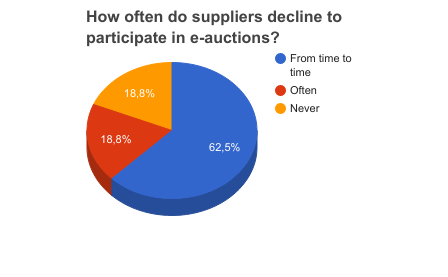E-auctions in B2B procurement

E-auctions are becoming an increasingly popular tool supporting the process of business procurement. In many situations they are an alternative to negotiations with suppliers. In particular, e-auctions are known to users of procurement platforms, where you can also place electronic offer inquiries.
The main goal of using electronic auctions is the optimization of trade offers, which requires the engagement of suppliers. There are of course situations, in which the suppliers decline to participate in e-auctions. Of course, the analysis of the situation and the very context of the auction is of key importance in such situations. It is also worth to remember that suppliers also make use of different strategies of participation in e-procurement, and their utilization of a bottom price equal to the top price (the price in the initial offer is the final price at the same time) in many cases undermines the legitimacy of participation in an electronic auction.
E-auctions as a tool for supporting procurement processes are utilized by companies in different ways. Apart from open auctions, business practice often sees the use of auctions as overtime after trade offers are collected. At the same time, for some companies, these do not constitute a closure for the process, but only a stage in determining the final terms of collaboration. The techniques and tools of holding talks with suppliers are of course a complex subject, however best practices indicate that an electronic auction should be the final stage.

All companies facing the problem of implementation of e-auctions analyze the potential benefits from the use of such a tool. Apart from savings, a significant topic is also the possibility of shortening the time of execution of procurement proceedings, and in many cases reducing the process costs. E-auctions can successfully be used as tools replacing open inquiries, which constitutes a good practice in relation to standard procurement of small value.
